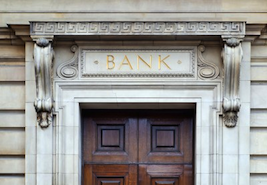 What factor is most responsible for the recovery Fed policy has – by most accounts – stimulated in financial (housing and labor also?) markets over the last 4 1/2 years?
What factor is most responsible for the recovery Fed policy has – by most accounts – stimulated in financial (housing and labor also?) markets over the last 4 1/2 years?
- Directing a fire hose of cheap money – directly (via LSAP, OMO) and indirectly (burying yields) – toward riskier assets?
Or,
- A well-tailored “communication” policy – via FOMC statements, Bernanke’s press conferences and Fed Governor speeches – that leverages Fed credibility as lender of last resort to continue the virtuous cycle of positive market and economic sentiment?
The first bullet will be familiar: 4.5 years on from the onset of QE1, it’s a widely-held assumption (rightly or wrongly) Fed policy is effectively pumping money into stocks. If anything, recognition of the Fed’s communication policy as a discrete and “unconventional” tool (the second bullet) is meager and – where acknowledged – usually treated as an effect (e.g. “Fed prints money. Stocks go up. Quarterly 401k statements are green. Perceived wealth effect engenders optimism/stimulates spending.”) rather than a cause.
This may seem like an academic distinction – doesn’t one just stem from the other? – but I think not.
When the Fed begins to tighten by reducing asset purchases and/or raising rates, the causal roles of the multi-pronged Fed policy – what worked, and how well – will be revealed ex post facto. Remember, these are vast and uncharted policy waters the Fed is treading. Calm may rule while policy accommodation is fully unwound; but what if the superficial placidity right now belies a
rogue wave of adverse consequences? Fed pessimists have long suggested big problems are baked into that policy-unwind cake. Others say it’s all about how deftly the Fed plays the hand of exit cards it has dealt itself.
What if the Fed can identify the cards it’s holding, but doesn’t understand how to best play the hand(s) that result? Any misconception by the Fed regarding 1) the efficacy of fed policy initiatives or even 2) financial markets’ perception of fed policy initiatives could build a lot of negative momentum into that rogue wave.
Before I mix in any more metaphors, recall the bullet points up top: How much of the bid under asset prices is a result of hard, quantitative easing (including the LSAP iterations and other facilities of the past 4.5 years)? And how much results from the soft, “tail-wagging-the-dog” structure of market optimism that is reiterated, reinforced and refined with every communique from the Fed?
My impression, in brief, is that these factors of Fed policy are very easy to identify. After all, the Fed has described and demonstrated them in detail, over and over again. Determining how effective they are – relative to one another and to an absolute degree – is very difficult: to the Fed, and to observers (politicians, economists, market participants). According to markets, something is working: but what that is and how quickly or slowly it can be taken away remains largely unknown.
I plan to write some upcoming posts going over this question in more detail. For now, I’d like to throw the original question out to you:
Which factor is most responsible (of the above, or another you may have in mind) for the recovery that loose Fed policy has stimulated in markets? Why so? Will this factor pose problems for the Fed as it attempts a smooth exit, or not?
I welcome your thoughts in the comments below!
Twitter: @andrewunknown and @seeitmarket
Author holds no position in any securities mentioned at the time of publication.
Any opinions expressed herein are solely those of the author, and do not in any way represent the views or opinions of any other person or entity.







